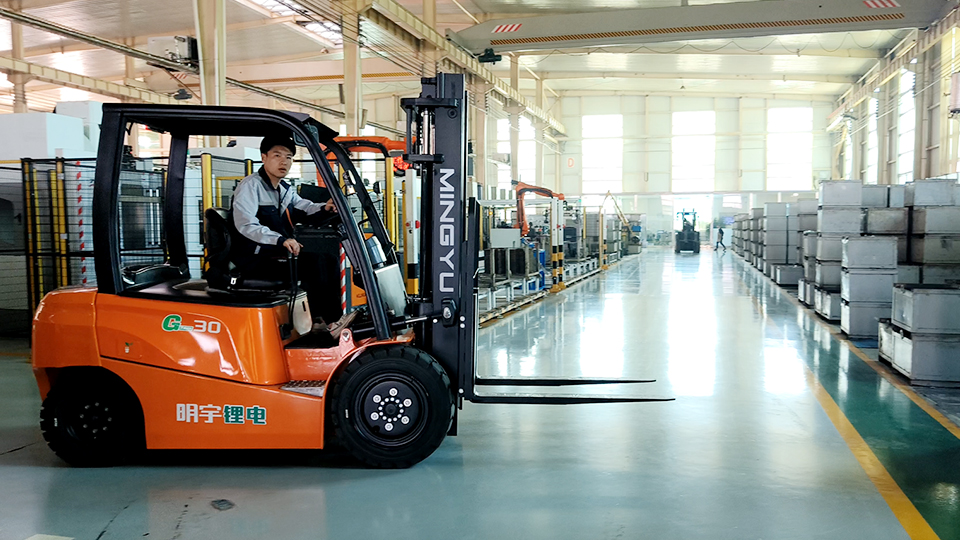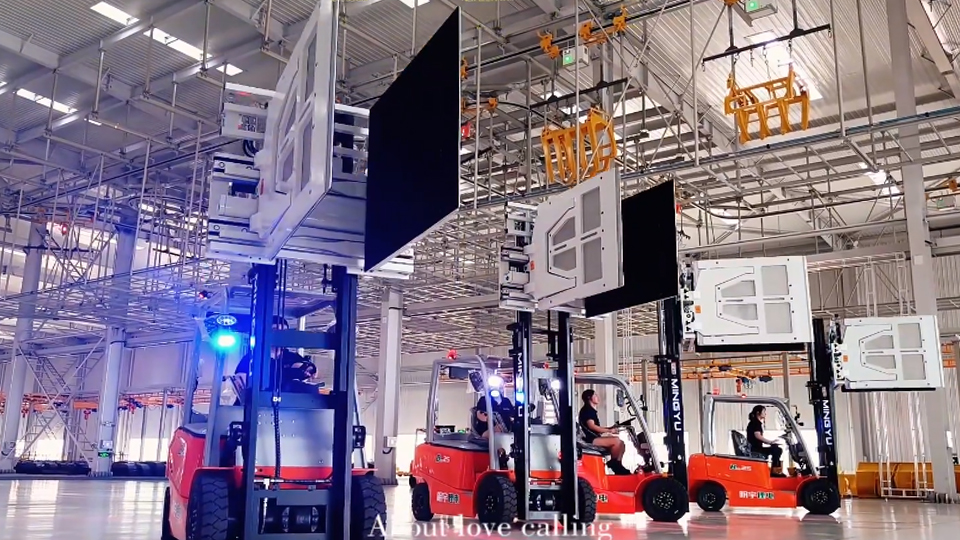
Introduction
A forklift driver, also known as a forklift operator, plays a crucial role in various industries by efficiently moving and handling heavy materials. This job requires a unique set of skills, training, and certifications to ensure safety and productivity. This comprehensive article will delve into the responsibilities, qualifications, training, and career prospects of a forklift driver, providing a detailed overview of this essential profession.
The Role of a Forklift Driver
Forklift drivers are responsible for operating powered industrial trucks to move materials within a warehouse, manufacturing facility, construction site, or other industrial settings. Their primary duties include:

1. Material Handling
Forklift drivers are tasked with loading, unloading, and moving materials to designated areas. This involves lifting and placing goods on pallets, racks, or shelves. They must ensure that materials are handled carefully to prevent damage and maintain inventory accuracy.
2. Safety and Compliance
Safety is paramount in the role of a forklift driver. Operators must adhere to all safety regulations and guidelines, including those set by OSHA (Occupational Safety and Health Administration) in the United States and similar regulatory bodies in other countries. This includes wearing appropriate personal protective equipment (PPE) and conducting regular safety checks on the forklift.
3. Equipment Maintenance
Forklift drivers are responsible for performing daily inspections of their equipment. This includes checking fluid levels, tire pressure, and ensuring that all safety features are in working order. Reporting any issues or malfunctions to the maintenance team is also part of their duties.
4. Record Keeping
Maintaining accurate records of material movement, equipment inspections, and any incidents is essential. Forklift drivers often use logbooks or digital systems to document their activities, ensuring transparency and accountability.
Qualifications and Training
Becoming a forklift driver requires specific qualifications and training to ensure competency and safety.
1. Age and Legal Requirements
In most jurisdictions, forklift operators must be at least 18 years old and possess a valid government-issued ID. Some regions may have additional legal requirements, such as specific licenses or permits.
2. Physical Requirements
Forklift drivers must meet certain physical requirements to perform their duties safely. This includes having good vision, hearing, and physical coordination. They must also be able to withstand the physical demands of the job, such as prolonged sitting, lifting, and maneuvering heavy loads.
3. Training Programs
Forklift operators must complete a certified training program that includes both theoretical and practical components. These programs cover topics such as:
OSHA Regulations: Understanding and adhering to safety regulations.
Load Management: Proper techniques for lifting, moving, and stacking loads.
Pre-Operation Inspections: Conducting daily checks to ensure the forklift is in safe operating condition.
Emergency Procedures: Responding to emergencies and accidents.

4. Certification
Upon completing the training program, operators must pass written and practical exams to obtain their forklift certification. This certification is typically valid for 3 to 5 years and must be renewed through refresher training.
Types of Forklifts
Forklift drivers may operate various types of forklifts, each designed for specific tasks and environments. Common types include:
1. Counterbalance Forklifts
These are the most common type of forklifts, characterized by a counterweight at the rear to balance the load. They are suitable for general warehouse operations and come in different capacities and sizes.
2. Reach Forklifts
Reach forklifts are designed for narrow aisle operations and have a telescopic mast that allows them to reach high shelves. They are ideal for maximizing storage space in tight areas.
3. Pallet Jacks
Pallet jacks are manual or electric forklifts used for moving pallets over short distances. They are smaller and more maneuverable than traditional forklifts.
4. Side Loaders
Side loaders are designed to handle long or bulky loads. They have a side-mounted lifting mechanism that allows them to pick up and transport loads from the side.
5. Rough Terrain Forklifts
These forklifts are built for outdoor use and can handle rough terrain and uneven surfaces. They are commonly used in construction sites and outdoor warehouses.
Career Prospects
The demand for skilled forklift drivers is consistently high across various industries. Career opportunities can be found in:
1. Warehousing and Logistics
Forklift drivers are essential in warehouses and distribution centers, where they handle the movement of goods and manage inventory.
2. Manufacturing
In manufacturing facilities, forklift drivers transport raw materials and finished products, ensuring smooth production processes.
3. Construction
Rough terrain forklift drivers are in demand on construction sites, where they move heavy materials and equipment.
4. Retail
Retail operations, particularly those with large storage areas, require forklift drivers to manage inventory and restock shelves.
5. Agriculture
In agricultural settings, forklifts are used to move heavy loads such as bales of hay, sacks of grain, and other materials.
Safety Considerations
Safety is a critical aspect of the forklift driver's role. Operators must be aware of their surroundings at all times and follow these key safety practices:
1. Pre-Operation Inspections
Conduct thorough inspections of the forklift before each shift to identify any issues that could compromise safety.
2. Proper Load Handling
Ensure loads are properly balanced and secured to prevent tipping. Never exceed the forklift’s rated capacity.
3. Clear Communication
Use appropriate signaling and communication methods to coordinate with other workers and avoid collisions.
4. Adhere to Speed Limits
Follow designated speed limits within the facility to maintain control and avoid accidents.
5. Emergency Procedures
Be familiar with emergency procedures and know how to respond in case of an accident or malfunction.
Conclusion
A forklift driver is a vital component of many industrial operations, responsible for efficiently and safely moving heavy materials. This role requires specialized training, certification, and adherence to strict safety protocols. With a wide range of career opportunities and the continuous demand for skilled operators, becoming a forklift driver can be a rewarding career choice. By understanding the responsibilities, qualifications, and safety considerations, individuals can successfully navigate the path to becoming a proficient forklift driver and contribute to the smooth operation of various industries.
Name: selena
Mobile:+86-13176910558
Tel:+86-0535-2090977
Whatsapp:8613181602336
Email:vip@mingyuforklift.com
Add:Xiaqiu Town, Laizhou, Yantai City, Shandong Province, China